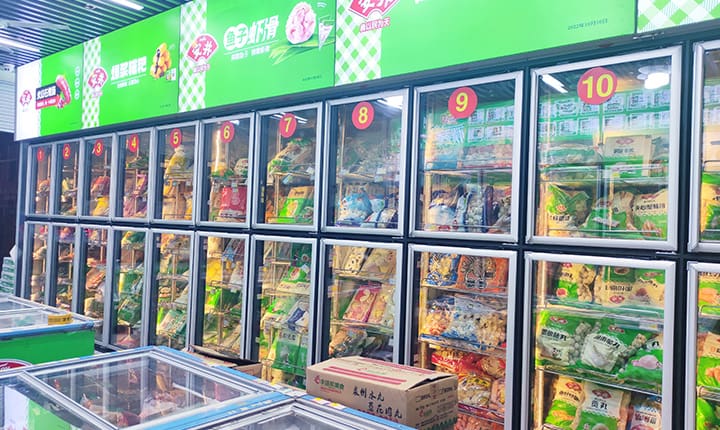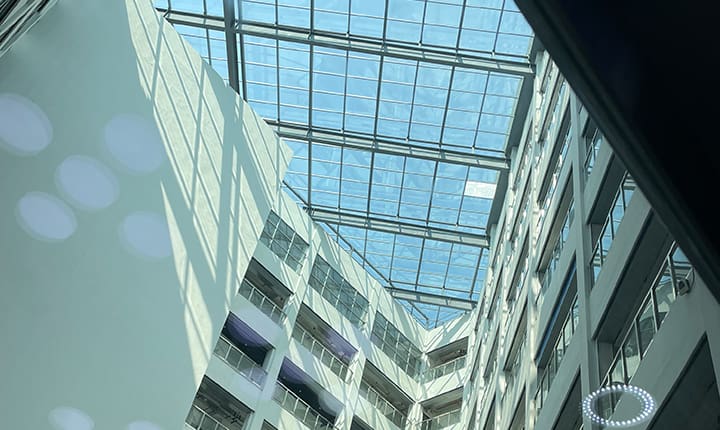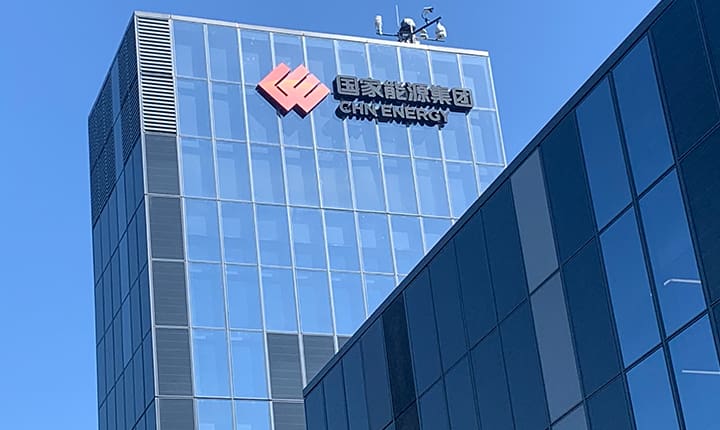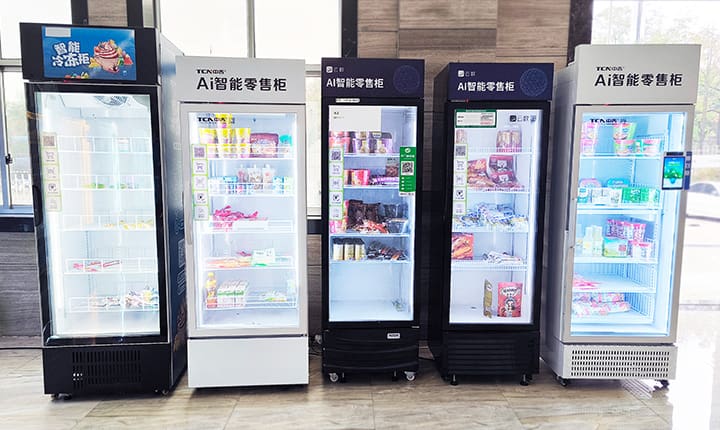
8 Surprising Uses for Vacuum Glazing (That Aren’t Windows)
When you think of vacuum glazing, windows probably come to mind first. And with good reason: it’s best known for […]
When you think of vacuum glazing, windows probably come to mind first. And with good reason: it’s best known for delivering ultra-slim thermal insulation in heritage and modern windows alike.
But there’s far more to this clever technology than meets the eye. Thanks to its unique properties, like its 0.34 W/m²K U-value, 8.3 mm profile, and up to 41 dB noise reduction, LandVac vacuum glazing is being used in some truly unexpected ways.
Here are several alternative applications that show how versatile vacuum glazing can be.
1. Rooflights and skylights
Vacuum glazing performs just as well when installed at an angle. That makes it perfect for rooflights, skylights, and overhead glazing where heat gain, condensation, or noise might be a concern.
Unlike gas-filled units, it won’t lose performance due to air stratification, which makes it ideal for high-spec residential and commercial projects.
A great example: the Energy-Efficient Skylight Project at Shenyang Jianzhu University Laboratory Building, where LandVac Titanium VIG was used to deliver thermal insulation and soundproofing in a skylight, creating a more comfortable and quiet interior.

2. Glass façades
Vacuum glazing isn’t just for internal partitions or windows. It’s also making its way into large-scale façades. Its thin profile and high thermal performance make it ideal for curtain walling and glazed elevations, particularly where building performance targets are tight but aesthetics still matter.
It allows architects to create expansive glazed areas without relying on bulky triple glazing. Its clarity and condensation resistance make it a smart option in both commercial and residential designs.
A good example is this Bavarian case study featuring a sloped south-facing façade exposed to high solar radiation and weather extremes. LandVac was used to deliver excellent thermal and acoustic performance while maintaining design clarity and condensation resistance.
Another example is this façade CHN Energy:

3. Internal partitions and acoustic screens
Vacuum glazing isn’t just about thermal performance. With up to 41 dB noise reduction, it can also be used internally to reduce sound transmission between offices, meeting rooms, or apartments.
It’s particularly useful where space is tight but sound privacy is essential.
It can also be used to great effect to partition specialist environments like wine cellars, where temperature stability, condensation control, and visual clarity are just as important as space-saving and sound insulation. The ultra-clear appearance enhances the visual impact of displays, while the vacuum-sealed design prevents moisture build-up. This keeps the glass dry and wine labels clearly visible, even in humid conditions.

4. Display cabinets and museum cases
When artefacts need preserving, stable temperature and humidity are essential. Vacuum glazing offers excellent insulation without obscuring the view, making it ideal for museum-grade display cases and conservation environments.
This approach is already being used in museums in China to protect cultural relics while improving display clarity.
Bonus: the low profile keeps attention on the objects, not the glazing.
5. Commercial fridges and freezers
Vacuum glazing is being adopted in supermarket freezer doors and cold-chain refrigeration to improve insulation, reduce condensation, and save energy. Panasonic’s vacuum insulated glass display cases reportedly cut energy consumption by up to 33 percent compared to traditional models.
Another example is LandVac’s application in supermarket freezer doors, demonstrating the practical benefits of vacuum glazing in enhancing energy efficiency and reducing condensation in cold storage environments.

Other manufacturers are also embracing the technology, including Lab Res Prod’s 26 cu. ft. vacuum glass lab refrigerator and BSI’s hinged glass door chromatography refrigerator. These units are typically used in laboratories, where storing temperature-sensitive chemicals and biological samples requires extremely stable internal conditions. Vacuum glazing helps prevent condensation and thermal fluctuation. This ensures constant visibility and precise temperature control, which are both essential for scientific accuracy and safety.
These products benefit from VIG’s clarity, insulation, and condensation control in demanding environments where consistent internal temperature and visibility are essential.
6. Vending machines
Vacuum glazing is also used in smart vending machines, bringing excellent thermal insulation, clearer visibility, and condensation control—all crucial for self‑service retail.
In a notable project in Hunan, China, the Hunan Smart Vending Machine employs LandVac’s titanium VIG to dramatically reduce heat transfer. It provides 2–4× better insulation than standard insulated glass and 6–10× better than single-pane alternatives.

Possible Future Uses
7. Motorhomes and RVs
While not yet widely adopted in motorhomes and RVs, vacuum glazing has clear potential for this growing market. Mobile living spaces demand slim, lightweight materials that offer strong insulation, reduce condensation, and limit external noise. This is especially important for off-grid travel in varying climates.
Vacuum glazing delivers all three. Its compact 8.3 mm profile, outstanding thermal performance (U-value of 0.34 W/m²K), and up to 41 dB noise reduction would help keep interiors comfortable and quiet without adding weight or bulk. With increased demand for energy-efficient, high-performance vehicles, this could be a logical next step for innovation in the sector.
8. Transport and aviation infrastructure
Vacuum glazing has clear potential for use in transport hubs, such as train stations, and may become a valuable upgrade in aviation control towers. These buildings require excellent thermal insulation, glare control, and consistent acoustic performance to maintain visibility and focus in critical conditions.
While vacuum glazing is not yet widely used in these applications, its benefits align closely with the demands of aviation settings.
According to Soundproofs.org, airport control towers benefit from high-performance glazing that reduces heat gain, minimises glare, and improves sound insulation…all of which vacuum glazing is well-suited to deliver.
What makes vacuum glazing suitable for more than just windows?
The appeal? Superior thermal and acoustic performance, lighter weight, and clearer visibility compared to triple glazing or heavy laminates.
Vacuum glazing may be the future of high-performance windows.
But that’s just the beginning…
Want help exploring custom applications?
Contact our team to talk through your specification.